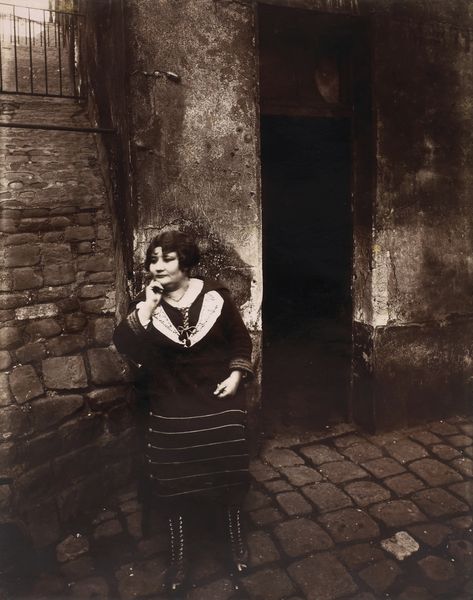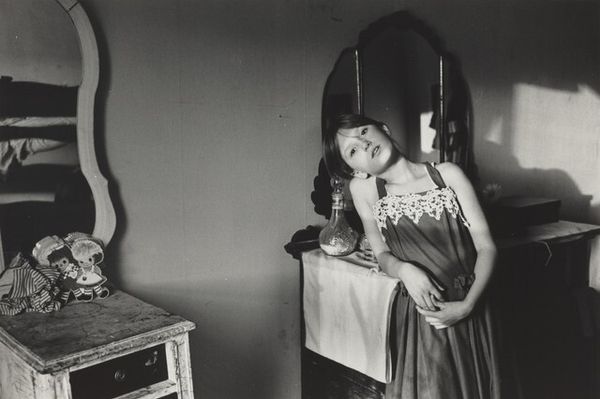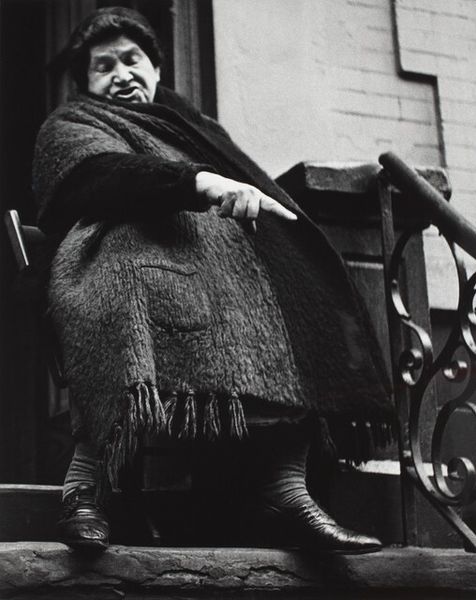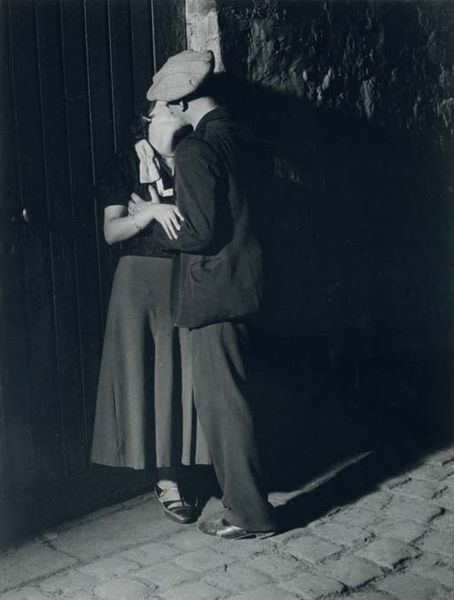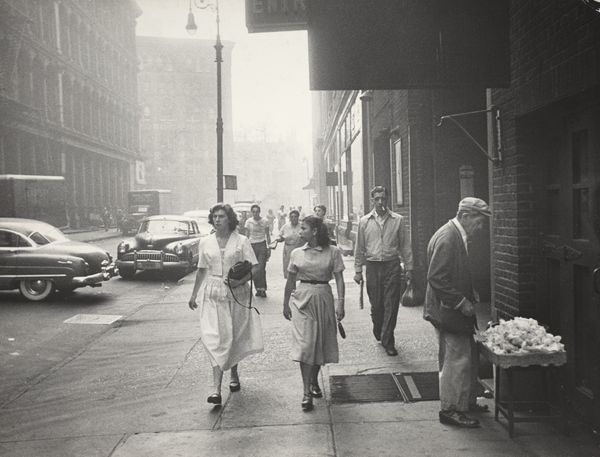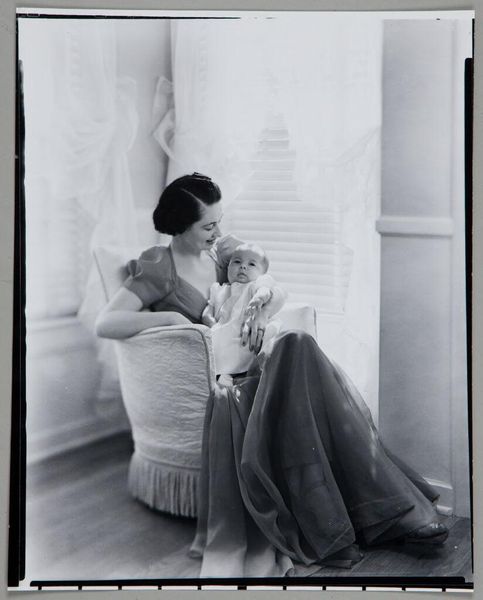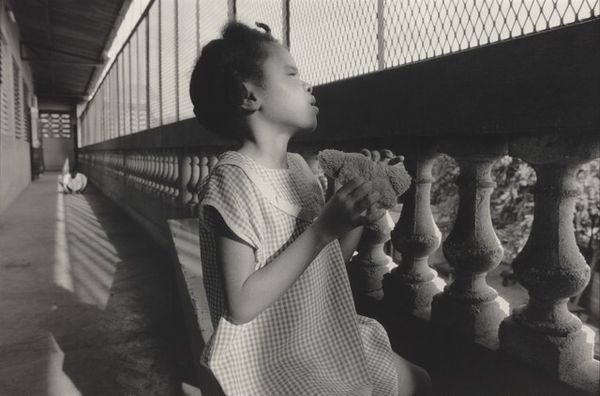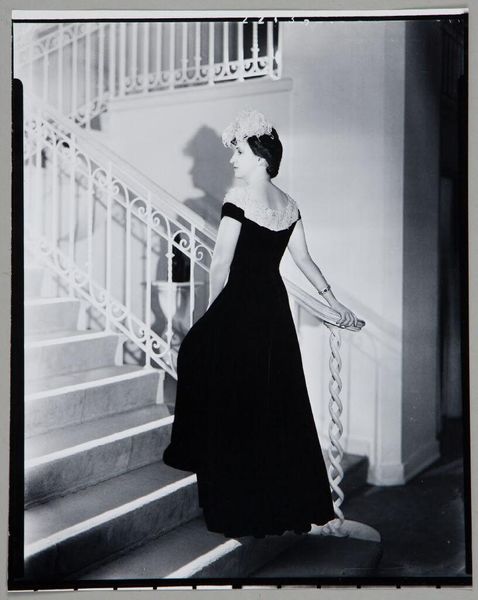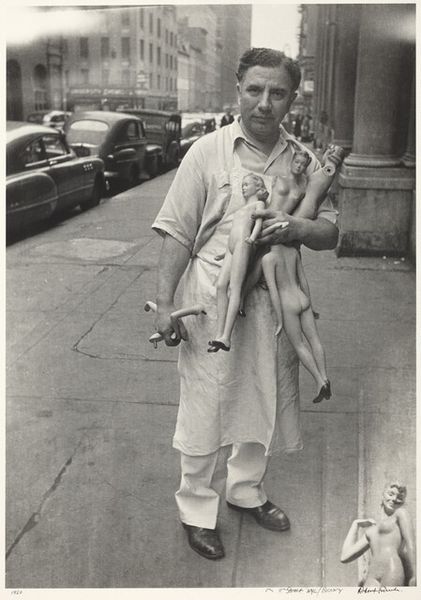
photography, gelatin-silver-print
#
portrait
#
black and white photography
#
outdoor photograph
#
black and white format
#
archive photography
#
street-photography
#
photography
#
historical photography
#
gelatin-silver-print
#
monochrome photography
#
ashcan-school
#
cityscape
#
realism
Dimensions: image: 14.6 x 21.7 cm (5 3/4 x 8 9/16 in.) sheet: 20.2 x 25.3 cm (7 15/16 x 9 15/16 in.)
Copyright: National Gallery of Art: CC0 1.0
Editor: So, this is Walker Evans' "Street Scene, New York City," potentially from 1938, a gelatin-silver print. It's a really striking image of these kids on a stoop. There's a raw quality to it; you feel like you’re really *there* in that moment. What do you see in this piece? Curator: I'm drawn to how the photograph exposes the very fabric of urban life and the working-class experience. Think about the materiality itself: a gelatin-silver print, mass-produced and relatively inexpensive, making it accessible to a wide audience. Evans used readily available materials to capture these raw, everyday moments of labor, leisure, and lived experience in New York. Editor: Right, I hadn't thought about how the materials themselves were part of the statement. So, you’re saying it challenges the notion of high art? Curator: Absolutely. Consider the contrast between the relatively unadorned clothing worn by the children, signifying economic hardship, and the elaborate ironwork of the stoop, suggesting a previous era's aspirations. It all underscores a critical assessment of economic inequality in pre-war America. The materials and mode of production speak to both a personal experience and a shared social reality. Editor: That’s interesting, because you usually see that type of detail overlooked when focusing on composition or form alone. Curator: Exactly! By examining the materiality, we disrupt traditional hierarchies between art and craft, highlighting how the very means of production shapes the meaning we extract from a work of art. Editor: I never thought to interpret social commentary based on photographic materials, like paper, chemicals, and how readily available it would be during that period. This new lens helps contextualize work through a social framework. Curator: Indeed. Looking closer at the photograph’s components fosters new insights into its significance, and I hope it provides the same impact on future work you explore.
Comments
No comments
Be the first to comment and join the conversation on the ultimate creative platform.
